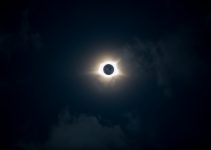Starting from late afternoon of October 25 through mid-morning of October 26, 2021, the sun released powerful solar flares of class X1 – and the resulting video is simply breathtaking.
Solar Flares
Did you know that the sun is a glowing ball of fire whose components are constantly reacting with each other in energy-intensive nuclear reactions? It’s made up mostly of hydrogen, about 92%.
The sun’s regularly gases undergo nuclear fusion to convert to helium – and these intense nuclear reactions release light, energy, and heat.

Solar flares are nothing new. They’re identified as short eruptions of intense high-energy radiations from the sun’s surface. They’re often associated with coronal mass ejection and the formation of new sun spots.
Though the sun is far from the Earth, these powerful bursts of radiation can quickly travel through space to reach us. The good news is that though the recent solar flare is intense at category X1, its harmful radiation isn’t likely to cause any physical, chemical, or nuclear effect on humans and other Earth’s inhabitants.
The radiation won’t be able to pass through our atmosphere and reach our skin, but it could potentially disrupt a level in the atmosphere where GPS and communications signals travel. That means that we might expect some technical glitches days some days after the solar flare, but they aren’t likely to cause any major damage or disruption.
While it’s not something new, solar flares continue to amaze humans, especially during times of intense activities like what was experienced in October.
The most significant flare was released on October 28 at 11:35 a.m. EDT. It was classified as an X1, a code used to denote intense solar flares.
Solar Flare Codes
Solar flares can be described using codes that indicate their intensity. The following are the codes or classifications, arranged from lowest to most intense:
- A
- B
- C
- M
- X
Each level has different intensities, with the higher number denoting a more power solar flare. For example, A1 is the lease intense while A2 is twice as powerful as A1. Then, A3 is three times more powerful than A1.
The same goes with the highest intensity level, X. The recent solar flare is among the most intense in recent years but it’s just the “lowest” of all the X levels.





